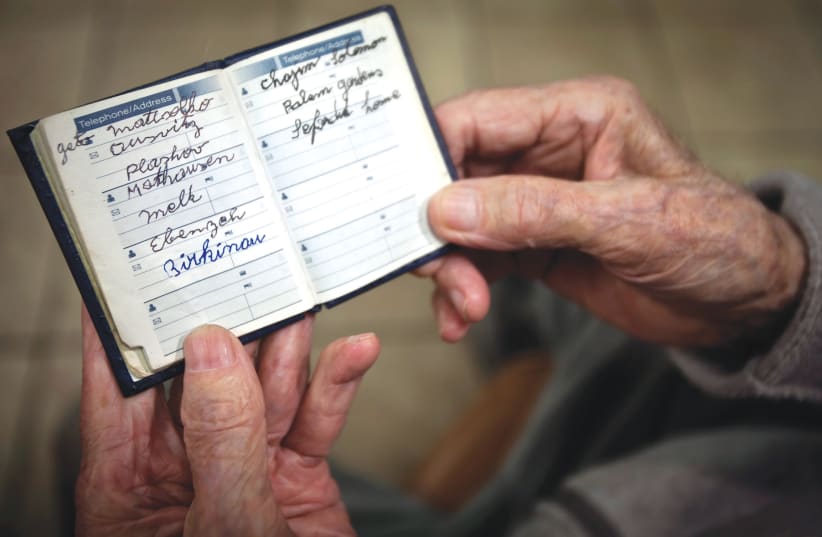Of the 500,000 Jewish survivors of the Holocaust, only approximately 100,000 are still alive today. What will happen when there are no more living survivors?
The Holocaust is more than 70 years in the past, but the war against memory continues. It is no longer a war waged by the Nazis, but rather modern society’s own war against time. As the opportunity for survivors’ first-hand testimonies diminish, preserving the memory of the Holocaust and its victims is of the utmost importance.
A recent Claims Conference survey found significant lack of Holocaust knowledge in the US, especially among millennials.According to the survey, 70% of Americans say fewer people seem to care about the Holocaust than they used to, and 58% believe something like the Holocaust could happen again. Another 41% of millennials say they believe that substantially fewer than 6 million (2 million or less) Jews were killed and 22% haven’t heard of, or are not sure if they have heard of, the Holocaust.
At the same time, according to statistics released this year by the Kantor Center at Tel Aviv University, antisemitism is on the rise in the US, particularly on college campuses. New York City police noted a 22% rise in violent antisemitic attacks. Last year saw 238 incidents of harassment, vandalism and assault targeting Jewish students on 118 campuses across the US.
For a society that often vows “never again,” these statistics serve as a wake-up call, affirming that we need to do much better to ensure that mantra. We must understand that the Holocaust began with hateful words and exclusionary actions, not immediately with mass murder. It is imperative that we do not ignore the ominous cloud of hate speech, racism, antisemitism and all forms of bigotry hovering over contemporary societies.
On a practical level, understanding the past means using the tools of the present to engage the younger generation in Holocaust education.
Social media and online sources are among some of the top platforms for Holocaust denial and antisemitism globally, yet part of the antidote to such scourges also lies on these very platforms.
Yale University’s Fortunoff Video Archive for Holocaust Testimonies this month launched a Holocaust survivors’ testimony podcast that draws from the archive’s 4,400 recorded testimonies, collected since 1979.
ON SOCIAL media, the Eva.Stories account on Instagram, which recounted the real-life story of a Jewish girl murdered in a concentration camp by imagining she had documented her story on the platform, received hundreds of millions of views on Israel’s Holocaust Remembrance Day. The project was a creative mechanism for educating the younger generation on a platform they already use.
This summer, American Jewish University in Los Angeles initiated an innovative project that brought together 170 Jewish-American and Israeli-American teens for a five-day hackathon to create new ways to keep memory of the Holocaust alive. The winning team, ConneXt, invented an app that uses artificial intelligence (AI). Its tabs allow users to form strong connections with personal stories from the Holocaust. The app’s Journey tab gives users the option to select the age, origin, and path of a survivor. Through the chat feature, users can message the Holocaust survivor they choose, receiving AI-crafted responses based on programming associated with that specific survivor. The app’s share tab serves as a basis for petitioning for Holocaust education to be mandatory in all 50 US states.
With a subscription to Netflix and Amazon, various educational films are available, including Schindler’s List and Auschwitz: The Nazis and the Final Solution, a powerful six-part documentary series from the BBC.
Various sites offer resources for educators and online academic courses, including the Anti-Defamation League, Anne Frank House, US Holocaust Memorial Museum, Simon Wiesenthal Center and more.
Yad Vashem also sends out e-newsletters for educators and has on its YouTube account powerful recordings of survivor testimony.
University of Haifa is also leveraging modern Holocaust education resources, recently launching an online edition of Arrivals,Departures, an exhibition at the University’s Hecht Museum that featured never-before-seen salvaged works of 18 Jewish artists from France whose careers and lives were cut short by the Nazis. The exhibition was based on the efforts of students from the University’s Weiss-Livnat International MA Program in Holocaust Studies who researched and helped restore the 138 artworks of the Oscar Ghez Collection, transforming them into vessels that are creating palpable, meaningful and enduring memories of the Holocaust for current and future generations.
To ensure that “never again” truly means never again, we must creatively deploy all the resources at our disposal to understand history in a deeply nuanced manner – and then put that knowledge into action.
The writer is CEO of the American Society of the University of Haifa.
